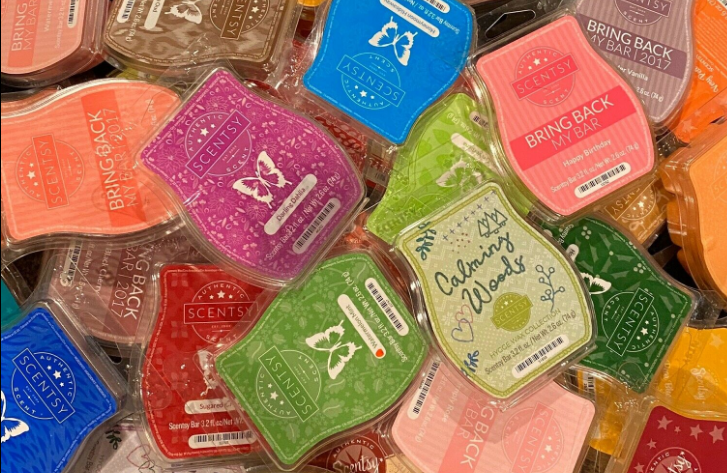Scented wax melts have become increasingly popular for home fragrance. Brands like Scentsy promise “safe” and “natural” scents to fill your home with inviting aromas. However, recent research is revealing potentially harmful health effects from these synthetic fragrance-filled melts. Studies show ingredients in Scentsy and similar wax melts may trigger migraines, sinus irritation, nausea, and other issues.
In this article, we’ll explore how artificial fragrances like those in Scentsy wax melts can impact your health. We’ll look at the scientific research linking these products to increased migraine attacks, sinus inflammation, breathing problems, and more. You’ll learn why toxins are released from popular wax melts and how they enter your body.
To help you avoid these harmful effects, we’ll also cover healthier home fragrance alternatives. Discover natural wax options, essential oils, and other safer scent solutions for you and your family. We’ll provide actionable tips to reduce migraines, sinus troubles, nausea, and other symptoms aggravated by synthetic fragrances. Ultimately, you’ll learn how to breathe easier by making smart fragrance choices for a non-toxic home.
What Are Scentsy Wax Melts?
Scentsy wax melts are one of the most popular types of scented products for home fragrance. They are paraffin wax cubes infused with synthetic fragrances and oils that are heated in a wax warmer to fill a room with aroma. When the wax melts, it releases its scent.
Major brands like Scentsy, Glade, and Better Homes & Gardens offer a wide variety of fragranced wax melt options to suit different scent preferences. Wax melts may say they provide air freshening for up to a day before needing to be replaced, but are a huge danger to our health.
Other comparable, yet still dangerous scented home products include scented candles, reed diffusers, plug-in air fresheners, and scented sprays. These all work to mask odors from bacteria in your home’s air in slightly different ways by dispersing unnatural fragrance oils, synthetic chemicals, into the surrounding environment. Recent research shows that some chemicals used in these artificial fragrance products may pose health risks.
Potential Side Effects From Being Around Synthetic Frangrance Products Like Scentsy
- Congestion
- Runny nose
- Headaches
- Sinus pressure
- Dizziness
- Nausea
- Fatigue
- Irritation of the mouth, throat, eyes, skin, lungs
The Sythetic Frangrance Industry is a Multibillion Dollar Industry. There is an interesting marketing spin created by CEO’s that goes – “We only use high-quality, food-grade paraffin wax, dye, and fragrance.” Paraffin comes from PETROLEUM. You can make crayons with it, or candles, or wax paper – but you don’t eat it. Inhaling paraffin candle fumes (burned or melted candles create fumes) can result in headaches, nausea and can lead to lung disease. Particles released into the air can cause bronchial constriction or asthma attacks.
A study by The American Chemical Association found paraffin increases indoor air pollution.
A study by the University of South Florida showed that candles made of paraffin wax emit low levels of benzene even when they are not lit. It is really bad for children to be in the same house with burning and melting paraffin because children’s lungs are not fully developed and they breathe around 3 times more air per kilogram of body weight than adults.
A 66-Year-Old Woman Developed Interstitial Lung Disease
She spent a lot of time in a place of worship, and had always been exposed to vaporized paraffin from burning candles. Once the afflicted woman was no longer exposed to the burning paraffin candles, she experienced spontaneous remission. Researchers said, “We believe that exposure to vaporized paraffin is closely associated with the pathogenesis of the disease.”
Wax Melts Products Contain Harmful Ingredients
- Synthetic fragrances – Scentsy wax melts contain synthetic fragrance oils created in laboratories. The exact ingredients are proprietary “fragrance blends”, but common chemicals include phthalates, acetates, and aldehydes. Fragrance chemicals can trigger neuroinflammatory responses that cause headaches and migraines in many individuals. Studies show increased blood flow to brain regions that regulate nausea and pain. Synthetic fragrances can irritate eyes, nose, throat, and skin. Studies link them to increased headaches/migraines, asthma attacks, respiratory distress, and nausea in sensitive individuals. The multitude of undisclosed chemicals means frequent new exposures.
- Paraffin wax – The wax base is typically made from petroleum. When burned, paraffin wax releases volatile organic compounds and carcinogens like benzene and toluene. Paraffin wax releases carcinogens like benzene when heated. Long-term inhalation of these compounds has been tied to increased cancer risks like leukemia and lymphoma.
- Artificial dyes – Wax melts often contain FD&C dye ingredients to color the wax. Studies show artificial dyes like Red 40 may be tainted with benzidine and other human carcinogens linked to bladder cancer and DNA damage.
- Acetone – This harsh chemical is found in some wax melt formulas. Acetone inhalation can cause nose, throat, and lung irritation. At high concentrations it can depress the central nervous system, resulting in headache, nausea, dizziness, and fatigue.
- Toluene – This solvent is sometimes used in synthetic fragrances. It can cause nausea, headaches, and dizziness. Toluene exposure affects the nervous system, causing neurological symptoms like numbness, trembling, and blurred vision. Studies also link it to developmental and reproductive harm.
- Phthalates – These chemicals are added to help fragrances last longer. Research indicates phthalates may disrupt hormones and the endocrine system. Phthalates disrupt hormones like estrogen, testosterone, and thyroid. Associated health effects may include early puberty in girls, lower sperm counts, obesity, and increased cancer risks.
- Formaldehyde – Traces of this known carcinogen can be released from synthetic fragrance chemicals in heated wax melts. Formaldehyde is a known human carcinogen. Inhaling traces released from heated wax can irritate the eyes and respiratory tract. Long-term exposure may cause asthma, allergic reactions, and nasal cancers.
So while wax melts seem harmless, their complex artificial fragrance formulations mean heating and inhaling them exposes you to a mix of potentially toxic substances.
Other Issues With Scentsy Wax Melts & Similar Products
Soot
In addition to releasing toxic chemicals, burning paraffin wax produces soot with particles that can remain suspended in the air for hours. Environmental Protection Agency showed that soot emissions from candles containing fragrances are significantly higher than those from non-scented candles.
Fragrance
Several hundred chemicals may be involved in creating a specific scent. Some disrupt hormones, some are potential carcinogens, lung irritants, brain and nervous system toxins, and environmental toxins. The candle industry does not have to disclose ingredients used to make the scent. They just call it fragrance. These harmful fragrance chemicals can cause health problems ranging from headaches, dizziness and allergy symptoms to asthma attacks, respiratory tract infections and even cancer.
Beeswax Candles & Wax Melts
Beeswax candles still release soot when burned. Occasional use in a well-ventilated room would be fine for most people as long as synthetic fragrance is not used. If beeswax candles are made with pure essential oils, the essential oil molecules will mostly combust as the wick burns. Dr. Douglas Corrigan stated, “This would not provide therapeutic aromatherapy, just a nice smell.”
Safer Alternatives
There are safer ways to scent the air. Here are some suggestions:
- Use essential oils. Essential oils can be placed in an ultrasonic diffuser to create a wonderful aroma. Be careful, many brands showing up in stores today are adulterated with chemicals. Cheap essential oils are rarely good.
I Trust Starwest Botanicals For All My Essential Oil Needs,
Click Here To Check Out Their Selection. - Simmer spices. Place spices such as cinnamon sticks, cloves and nutmeg in a small pot of water on the stove and simmer. You can fruit peels such as apple and citrus, and flowers such as lavender and rose to switch it up.
- Create potpourri. Use dried flowers, herbs, fruit rinds and spices to make potpourri. There are plenty of DIY recipes – just google!
While scented wax melts seem innocent enough, the synthetic fragrances and chemicals used to create these products can have real and harmful health impacts. Research clearly shows ingredients commonly found in wax melts like Scentsy can increase the risk of migraines, breathing issues, hormone disruption, and even cancer among sensitive individuals. These consequences often accumulate gradually over regular, long-term use.
Luckily, safer natural options exist to fragrance your home without toxins. Look for wax melts made with pure essential oils instead of synthetic perfumes. Beeswax or soy wax bases are also less toxic alternatives to paraffin wax. Using unscented candles or essential oil diffusers are other ways to fill your home with cleaner, plant-based aromas.
Ultimately, your health and that of your family should be the top priority when selecting home scents. By understanding the science linking artificial fragrances to health issues, you can make informed choices to reduce your exposure. Seek out non-toxic products to create a healthy home environment free from hazardous hidden toxins. With a few simple swaps, you can breathe easier knowing the air you and your loved ones inhale every day is clean.





